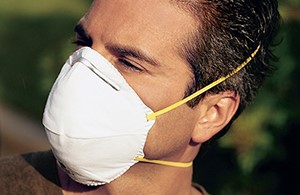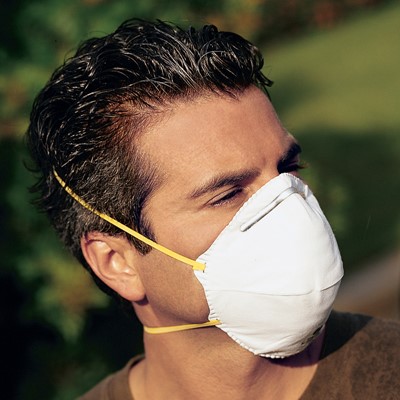Choosing the right disposable respirator

Dust, dirt, and other particulates are often found in the air around a workplace. This can make it difficult, uncomfortable, and unhealthy for workers to perform their jobs. That's why employers should provide the right types of disposable respirators. Workers will appreciate the fact that a respirator with an appropriate rating has been made available to them.
The National Institute for Occupational Safety and Health (NIOSH) provides designations for different levels of protection offered by respirators. They are as follows:
• N95 - protects against 95 percent of airborne particles and is not resistant to oil
• N99 - protects against 99 percent of airborne particles and is not resistant to oil
• N100 - protects against 99.97 percent of airborne particles and is not resistant to oil
• R95 - protects against 95 percent of airborne particles and is somewhat resistant to oil, with use restricted to 8 hours
• P95 - protects against 95 percent of airborne particles and is strongly resistant to oil
• P99 - protects against 99 percent of airborne particles and is strongly resistant to oil
• P100 - protects against 99.97 percent of airborne particles and is strongly resistant to oil
In addition to the level of protection from oil and airborne particulates that disposable respirators provide, there are a number of details that employers must take into account when choosing the right safety supplies. Here are some variables to consider:
Some respirators come with exhalation valves. These devices help to expel warm, moist air and make it easier for the wearer to breathe. Exhalation valves provide added comfort when work is being done in a hot and humid environment.
There are disposable respirators that come in hygienic packages and are folded flat for easy storage and distribution. This makes transporting them much easier, minimizes contamination, and ensures a clean, fresh respirator when needed.
When using safety glasses, the condensation that comes from breathing can escape from a disposable respirator and cause the eyewear to fog up. In these situations, it is helpful to use a respirator with an adjustable noseband, which keeps the mask sealed near the eyes to help block condensation.
Convenient Handy Straps allow masks to be removed quickly, then lets the respirator hang around a worker's neck, allowing workers fast, easy access to their respirator.
Unlike many surgical masks that have ear loops, disposable particulate respirators offer a variety of elastic head straps for a more secure and comfortable fit. On disposable respirators with two straps, one goes over the ears and fits across the back of the head, while a second goes under the ears and around the back of the neck. Single strap respirators are worn with a strap that goes over the ears and around the back of the head. Straps can be made out of latex-free elastic or fabric, and they may be adjustable.
Faceseals can be found lining the inside edge of some disposable respirators. These give workers a bit more comfort, and since the faceseal will fit to the shape of their faces, it provides a secure seal.
Some respirators are specialized for certain tasks or industries. These include fluid-resistant and bacterial filter respirators, which are useful in the medical industry. Many disposable respirators are designed to block welding fumes and nuisance levels of organic vapors, acid gases, or ozone.
Employers need to make sure that all workers are fit-tested for disposable respirators before they begin wearing them in hazardous environments. When not worn properly, the protection offered by a respirator is severely limited and may even make the respirator completely useless.





